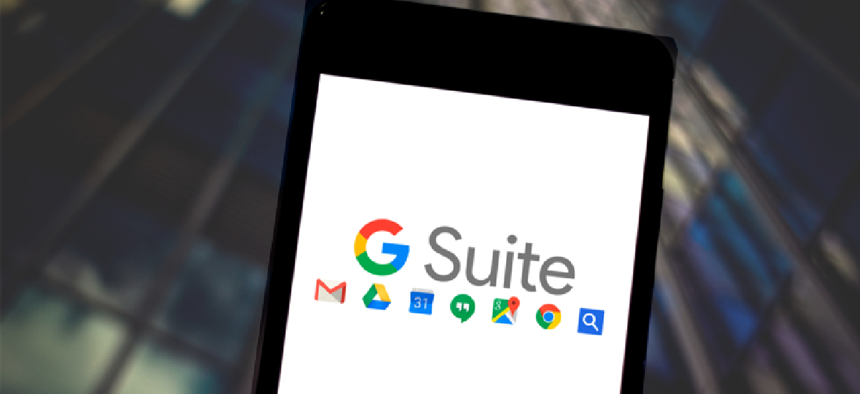Arizona rides up to the G Suite cloud


Connecting state and local government leaders
Moving nearly 100 agencies and more than 36,000 employees to Google’s G Suite cloud-based office productivity solution has helped the state consolidate and modernize systems.
Arizona’s migration to Google’s G Suite cloud-based office productivity solution has helped the state government consolidate and modernize systems and boost efficiency and security.
The transition of nearly 100 agencies and more than 36,000 employees began in 2017 and will finish this month. The main objective was consolidating more than 30 different email platforms into one, which would improve enterprisewide contract transparency and facilitate collaboration and communication among agencies, Doug Lange, Arizona’s chief strategy officer, told GCN. For help, the state contracted with Google Cloud partner SADA Systems and Google Professional Services.
“We wanted a better way to share data from one agency to another and having tools like Drive [for cross-agency collaboration and Hangouts for communications] allows us to accomplish that,” Lange said. Plus, when we think about “hiring future talent, we recognize that nearly 90 million students are using G Suite today. When they come into the workforce, these are the tools that they are expecting to have.”
Currently, agencies' embrace of real-time collaboration and face-to-face video vary. “Typically, we see agencies get over the first phase for mail and calendar start to really adopt the other tools close to three months after,” Heather Sheston, statewide Google champion, wrote to GCN.
The state broke the migration into chunks of three- to four-month phases when leaders of the initiative worked with agencies to meet technical requirements, complete system analysis and conduct staff training, she said.
“We leveraged internal lessons-learned meetings and a dynamic VOC (voice of customer) strategy to mature our migrations as we progressed through the project,” she said. “We learned a lot through every phase and documented those so we could implement changes as the migrations progressed.”
In conjunction with the G Suite rollout, the state implemented two security solutions: Virtru for email encryption and Okta for single sign-on. The combination allows users to log in to their applications securely from any device and encrypt data at the browser level so they can share it with confidence and in compliance with regulations, CIO Morgan Reed said in an email.
One benefit of the state's modernization efforts has been increased cybersecurity. After one month on G Suite, 107,000 malicious emails were filtered out that the previous malware system missed, Brent Mitchell, director of state and local for Google Cloud, told GCN.
Another benefit of the consolidation will likely be cost savings, although saving money was not a goal of the migration, Lange said.
“Efficiencies are created all the time when users collaborate on documents, but one of the coolest announcements came from our governor’s office” during a quarterly cabinet meeting at which officials present large slide decks, Arizona's Reed said. “Recently, they required contributors to provide updates in slides and announced that it saved their team over two hours of work just on this one presentation.”
Reed’s use of G Suite applications will also help facilitate adoption, Sheston said.
Before moving to G Suite, end users had to send many copies of documents around for signatures or approval, for instance, before merging them into a final copy, she said. Now, they can share documents and collaborate in real time regardless of their physical locations.
“We have the same experience using email and chat across the state,” she said. “Previously, there wasn’t an easy way to contact users throughout the state. Now we have one seamless directory with cohesive methods for communicating across the enterprise.”
The migration has had its bumps, however. For instance, Google had to adapt the suite to the state’s business workflow needs. But the cultural shift was tougher, Lange said. Some employees have worked for the state for 20 to 30 years and had no desire to change how they do things.
“But, many employees use Gmail in their personal life so they are already familiar with the interface and some of the tools, and that helps with accepting change and adoption,” he added.
Other government entities considering a similar move should focus on communication, listening and cost justification in their planning, Google's Mitchell said.
“In my experience, when executive leadership explains the decision for the move, including the short/long term benefits, employees are able to rally around the change,” he said. “It’s important for the employees to know that they will receive training, and there will be services to support migration and deployment.”
Editor's note: This article was updated June 13 to clarify the scope of the email consolidation and correct the spelling of Virtru.
NEXT STORY: 5G: Cheers and cautions




